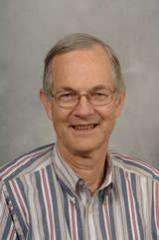非常抱歉,
你要访问的页面不存在,
非常抱歉,
你要访问的页面不存在,
非常抱歉,
你要访问的页面不存在,
验证码:

职称:Professor
所属学校:Georgia Institute of Technology-Main Campus
所属院系:School of Aerospace Engineering
所属专业:Aerospace, Aeronautical and Astronautical/Space Engineering
联系方式:404.894.3042
B.S., Aeronautics and Astronautics, Massachusetts Institute of Technology, 1964 M.S., Aeronautics and Astronautics, Stanford University, 1966 Ph.D., Aeronautics and Astronautics, Stanford University, 1969
Dr. James I. Craig, Professor, Aerospace Engineering, Georgia Tech; author of 150+ technical reports and papers. His research and publications are in the areas of structural mechanics, dynamics and design. Applications include active structural control, integrated aeromechanical design of rotor blades, earthquake engineering structural analysis and design, and probabilistic response estimation for populations of structural systems. He is responsible for teaching undergraduate engineering courses in structures, experimental methods and software engineering, and graduate courses in vibration measurement and analysis and computer-aided engineering and design. He has extensive experience in laboratory and full scale design and testing of structural and mechanical systems ranging from aircraft to solar energy utilization systems and building structures. More recent work has been involved with applications of robust linear and neural network adaptive active control and passive damping systems to various flexible structures including tall buildings where the objective is to attenuate building dynamic response to earthquakes. These nonlinear adaptive methods for structural control are also being applied to the design of spacecraft andspace structures. Other related work involves development of a design framework for aeromechanical design of helicopter rotor blades where blade cross sectional geometry is synthesized to meet aeromechanical (structural dynamic) design requirements. Dr. Craig is also a faculty investigator in the NSF Mid America Earthquake Center where hiswork is focused on formulating probabilistic methods for assessing the fragility of buildings in vulnerable areas of mid-America and on developing passive control and response modification methods for fragility improvement in both old and new construction.